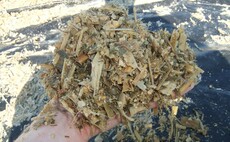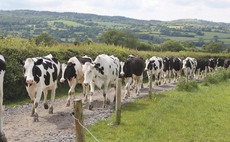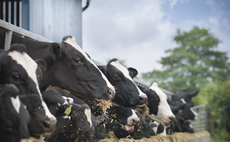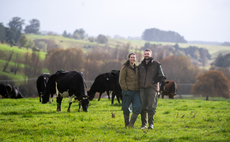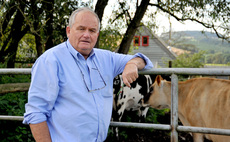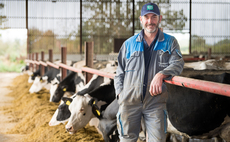Independent dairy nutritionist Dr Emma Redfern spoke at a recent Cheshire Grassland Society meeting where she delivered advice on feeding transition cows. Lauren Williamson reports.
There are various rules of thumb when feeding cows during the transition period, and independent dairy nutritionist, Dr Emma Redfern, said not adhering to these could have serious repercussions.
Dr Redfern said the challenges faced by cows during this period meant this group of cows was more susceptible to metabolic and infectious diseases.
She focused on milk fever, and said the popular method of adding magnesium to water troughs might not be enough on its own to help maintain the anionic-cationic balance in dry cows.
She said: Magnesium in water troughs only provides about 11per cent magnesium and can suppress water intake.
A measured amount of magnesium in the ration is far more accurate, but too much will make feed unpalatable and decrease dry matter consumption.
Dr Redfern added that boluses could be a useful way to supply magnesium, but again she advised against relying on them solely.
She said: A bolus will supply trace elements, but it does not supply any macro minerals.
She also suggested feeding a dry cow mineral, or a dry cow nut, to ensure magnesium requirements are met.
Two kilos per day of a specific dry cow nut will supply 40g of magnesium. They can be expensive, but there are dry cow nuts available with anionic DCAB [dietary cation-anion balance] salts already in them, so it takes away the need to measure out a ration.
In terms of protein, Dr Redfern said it was essential to get good quality protein into dry cows.
It is a bit old hat now to say that dry cows need between 12-14 per cent crude protein. This type of protein is crude by name and crude by nature and is not what we are looking for.
We want metabolised protein that is absorbable in the small intestine and that the cow can use for colostrum production.
If you have not got enough metabolised protein, the main thing you are going to see is poor colostrum quantity or quality and cows that might calve early.
Dr Redfern said dry cow nuts could often be low in starch due their high protein content, but without the correct amount of starch the rumen health could be affected.
She said: Starch is important because it preconditions the rumen. A calf has been pressed against the rumen for all that time and as a result the rumen has got smaller and smaller.
Even though we are feeding a bulky diet to try and stretch it out, the post-calving the rumen doesnt go straight back to normal size, so if we are not giving enough starch to dry cows, the rumen takes twice as long to return full capacity.
We need the rumen to get back to full capacity so she can eat more, have more energy, and produce more milk.
Dr Redfern added getting enough starch into cows pre-calving could be a particular challenge when feeding a small number of dry cows, and there was no easy fix for this.
She said: I would be really cautious about how much those fresh cows are eating in the parlour and take longer to build them up.
When it came to feeding straw, Dr Redfern said quantity and structure were important. I do not like feeding more than 5kg of straw to dry cows because it is like celery in the way that there is an energy cost to break it down, at a time when the pre-calvers energy requirement is increasing.
We want to give them straw, but just not too much.
If you have the space, chop your straw as chopped straw provides a more consistent rumen fill, and after eating the cows will lie down and have better rumination.
When asked if a milkers diet could be fed to pre-calvers, Dr Redfern said the problem with this was that it would have too much energy for dry cows.
She added: Too much potassium and calcium in that diet will lead to milk fevers. If you are insistent on feeding this way, speak to your nutritionist and dilute it with some straw and add magnesium chloride to it. At least then some of the potassium is neutralised and it will be safer for dry cows.
Dr Redfern emphasised that if you had a simple system that worked, then she would not recommend changing it. She said: The old adage applies; if it is not broke, dont fix it. But if you have low risk cows going down with milk fever, then nutrition could need adjusting. Work alongside a nutritionist to make improvements.






